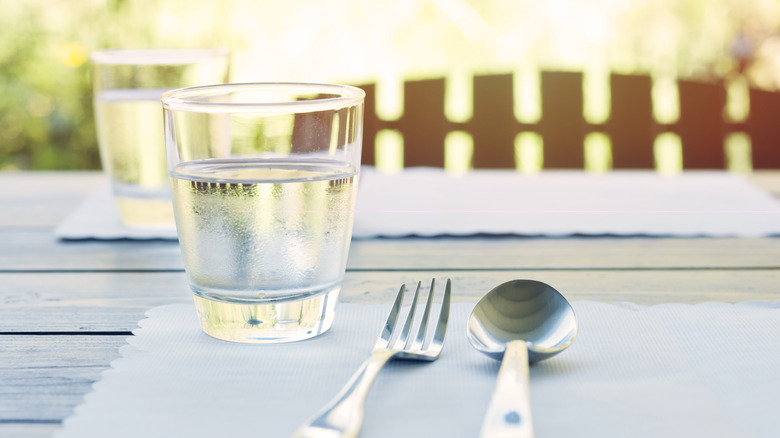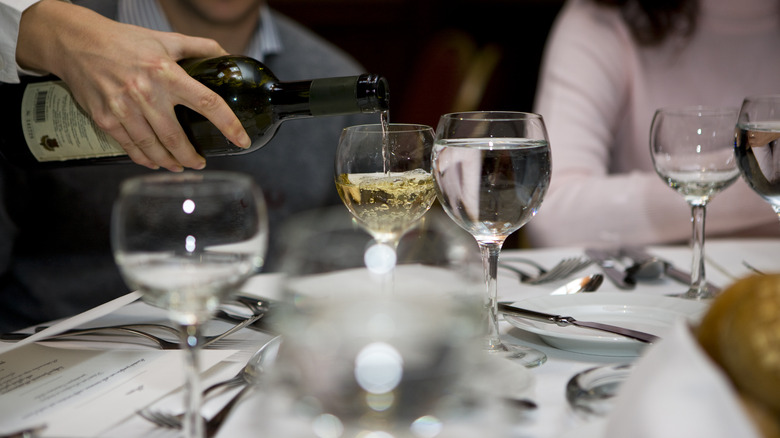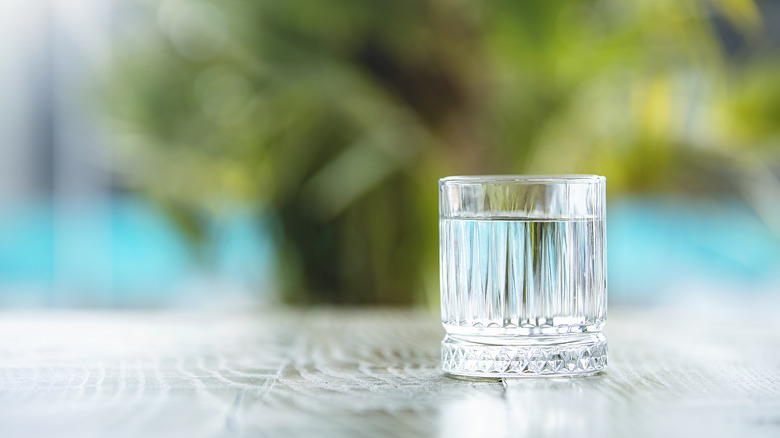Why Water Glasses Are Bigger At Some Restaurants Than Others
Whether or not you've noticed the differences between restaurants' water glasses, there are variations — and for specific reasons. Perhaps the most obvious difference from one restaurant to the next, of course, is the size of the water glasses.
The average water glass holds about 12 ounces, but some restaurants go as small as 10 ounces or as large as 25 ounces. As you can imagine, smaller glasses hold less water, requiring either a pitcher left on the table or constant attention from the waitstaff. As such, busier restaurants may opt for larger water glasses (but not so large that they're unwieldy) so that fewer refills are needed.
Water glass size may also depend on the type of food served at a given restaurant. For instance, if the menu contains spicier food, the restaurant might provide diners with larger water glasses to alleviate the burn, even though realistically, water sucks at cooling spicy sensations. A less-spicy menu, on the other hand, might go hand-in-hand with smaller glasses.
Restaurant water glass size may encourage you to pay for a bigger drink
To little surprise, the size of a restaurant's water glasses could very well be a psychological tactic encouraging diners to order a drink off the menu. After all, given the choice between a tiny glass of water (albeit free) and a large glass of a soft drink, many diners would choose the larger glass. Of course, this choice also comes with a price tag, benefiting the restaurant's bottom line.
With that being said, the price could be a glass-size factor even when you only order water. For instance, tap water isn't free in Europe due to regional water's lower quality, so a restaurant could theoretically use smaller glasses to drive water sales. Granted, water is still fairly inexpensive, but if a restaurant forces diners to order more of it — and by the glass no less — a small profit can be made. Every penny counts in the business world.
Restaurants choose cost-effective glass designs
Glass size aside, restaurants may also base their glassware purchase on elements of durability and weight. For example, a glass with a heavier base will resist tipping over, in turn reducing spills and falls onto the floor. Likewise, glasses with reinforced rims are less likely to chip during falls, so they remain safe for diners to use. Either way, these glasses prove more difficult to break, ultimately saving the restaurant from having to constantly buy replacements.
Of course, restaurants may forgo easily cleaned glass for plastic cups, which are cheaper and generally more durable. Such cups are ideal for use en masse, with the added benefit of having a wider range of sizes. Although plastic cups may not look or feel as nice as their classy glass brethren, waitstaff can carry more of these cups at a time with less fear of breaking glassware, simultaneously increasing a restaurant's efficiency.



